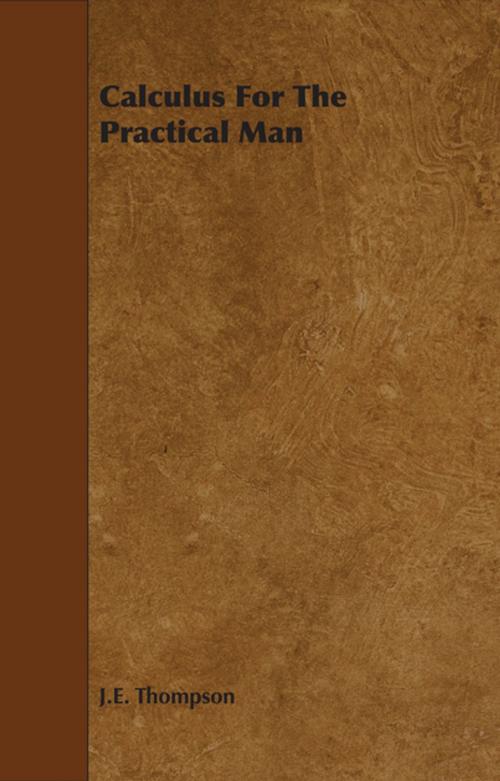Calculus for the Practical Man
Nonfiction, Science & Nature, Mathematics, Study & Teaching, Reference| Author: | J. E. Thompson | ISBN: | 9781446547083 |
| Publisher: | Read Books Ltd. | Publication: | April 16, 2013 |
| Imprint: | Thompson Press | Language: | English |
| Author: | J. E. Thompson |
| ISBN: | 9781446547083 |
| Publisher: | Read Books Ltd. |
| Publication: | April 16, 2013 |
| Imprint: | Thompson Press |
| Language: | English |
This book on calculus is one of a series designed by the author and publisher for the reader with an interest in the meaning and simpler technique of mathematical science, and for those who wish to obtain a practical mastery of some of the more usual and directly useful branches of the science without the aid of a teacher. Like the other books in the series it is the outgrowth of the author's experience with students such as those mentioned and the demand experienced by the publisher for books which may be read as well as studied. One of the outstanding features of the book is the use of the method of rates instead of the method of limits. To the conventional teacher of mathematics, whose students work for a college degree and look toward the modern theory of functions, the author hastens to say that for their purposes the limit method is the only method which can profitably be used. To the readers contemplated in the preparation of this book, however, the notion of a limit and any method of calculation based upon it always seem artificial and not in any way connected with the familiar ideas of numbers, algebraic symbolism or natural phenomena. On the other hand, the method of rates seems a direct application of the principle which such a reader has often heard mentioned as the extension of arithmetic and algebra with which he must become acquainted before he can perform calculations which involve changing quantities. The familiarity of examples of changing quantities in every-day life also makes it a simple matter to introduce the terminology of the calculus; teachers and readers will recall the difficulty encountered in this connection in more formal treatments. The scope and range of the book are evident from the table of contents. The topics usually found in books on the calculus but not appearing here are omitted in conformity with the plan of the book as stated in the first paragraph above. An attempt has been made to approach the several parts of the subject as naturally and directly as possible, to show as clearly as possible the unity and continuity of the subject as a whole, to show what the calculus is all about and how it is used, and to present the material in as simple, straightforward and informal a style as it will permit. It is hoped thus that the book will be of the greatest interest and usefulness to the readers mentioned above.
This book on calculus is one of a series designed by the author and publisher for the reader with an interest in the meaning and simpler technique of mathematical science, and for those who wish to obtain a practical mastery of some of the more usual and directly useful branches of the science without the aid of a teacher. Like the other books in the series it is the outgrowth of the author's experience with students such as those mentioned and the demand experienced by the publisher for books which may be read as well as studied. One of the outstanding features of the book is the use of the method of rates instead of the method of limits. To the conventional teacher of mathematics, whose students work for a college degree and look toward the modern theory of functions, the author hastens to say that for their purposes the limit method is the only method which can profitably be used. To the readers contemplated in the preparation of this book, however, the notion of a limit and any method of calculation based upon it always seem artificial and not in any way connected with the familiar ideas of numbers, algebraic symbolism or natural phenomena. On the other hand, the method of rates seems a direct application of the principle which such a reader has often heard mentioned as the extension of arithmetic and algebra with which he must become acquainted before he can perform calculations which involve changing quantities. The familiarity of examples of changing quantities in every-day life also makes it a simple matter to introduce the terminology of the calculus; teachers and readers will recall the difficulty encountered in this connection in more formal treatments. The scope and range of the book are evident from the table of contents. The topics usually found in books on the calculus but not appearing here are omitted in conformity with the plan of the book as stated in the first paragraph above. An attempt has been made to approach the several parts of the subject as naturally and directly as possible, to show as clearly as possible the unity and continuity of the subject as a whole, to show what the calculus is all about and how it is used, and to present the material in as simple, straightforward and informal a style as it will permit. It is hoped thus that the book will be of the greatest interest and usefulness to the readers mentioned above.















